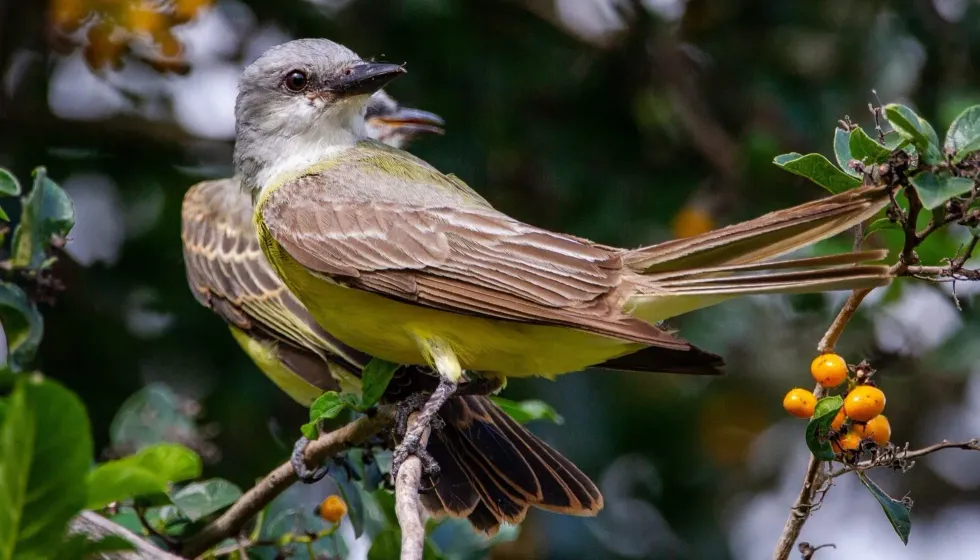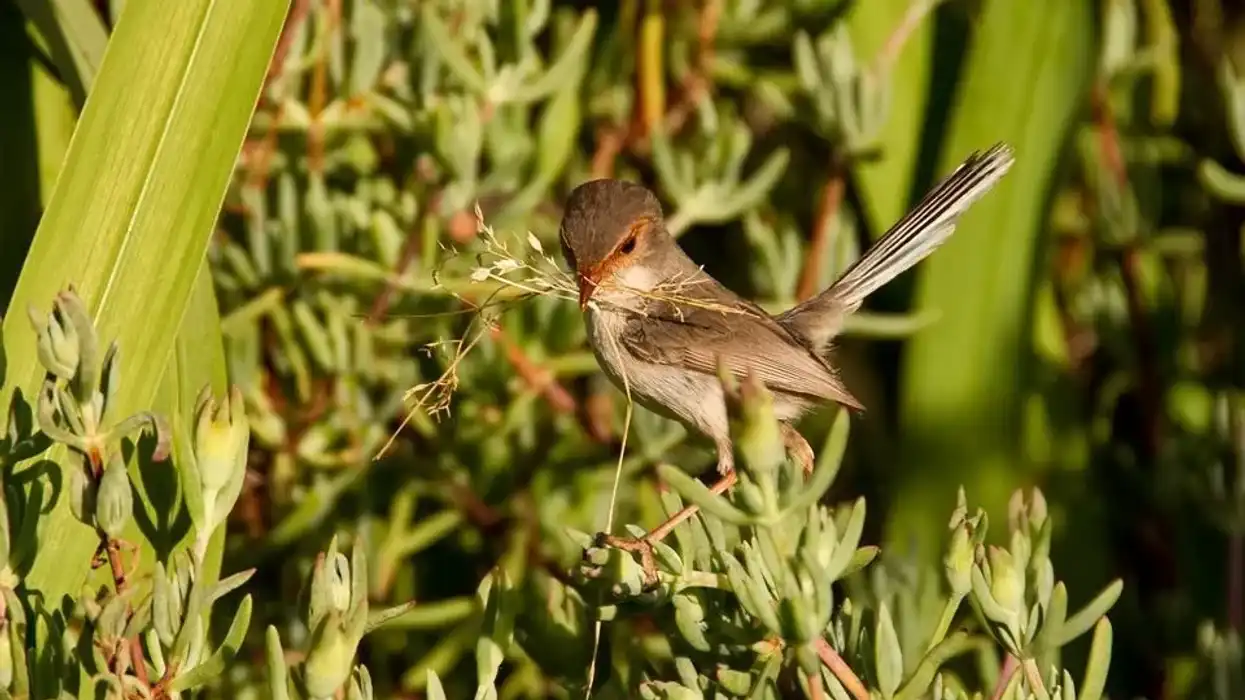Birds are easily one of the most beautiful creations on earth, especially songbirds. The birds of the passerine family, or songbirds, are very important insectivores.
A lot of people are unfamiliar and unaware of the beauty of this family of birds. Passerines are mostly warblers and are very important to the ecosystem as pollinators and as insectivores responsible for balancing the number of small terrestrial invertebrates.
This fact file is about such a songbird, alder flycatcher (Empidonax alnorum), belonging to the family of tyrant flycatcher birds. These birds are small-sized insectivores of the order passeriformes, family Tyrannidae, and genus Empidonax.
Native to north and south America, these birds are considered to be belonging to the biggest family of birds of around 400 species. An alder flycatcher is scientifically known as Empidonax alnorum.
When you compare alder flycatcher vs. Willow flycatcher, you can not help but notice remarkable similarities. Alder and Willow flycatcher were earlier identified as only a single species as Traill's flycatcher, but now both these species have been divided into two species.
While these two species look almost identical, Alder and Willow flycatchers give no response when they hear each other's call or song. Here are some interesting facts on the alder flycatcher (Empidonax alnorum).
After reading these fascinating facts, do check out our other articles on the great crested flycatcher and vermilion flycatcher as well.
Alder Flycatcher Interesting Facts
What type of animal is an alder flycatcher?
The alder flycatcher (Empidonax alnorum) is a small-sized bird but the largest of its family Empidonax. Small beaks, small body size, small tail, pale iris, and plumage with white patches are a few peculiar features of these birds. The alder flycatcher song is regarded as extremely melodious.
What class of animal does an alder flycatcher belong to?
An alder flycatcher is an insectivore bird belonging to the class Aves, a class of birds of the phylum chordata of kingdom animalia. It hails from order passeriformes, family tyrannidae, and genus Empidonax. More specifically, these birds belong to the family tyrannidae of the order passeriformes, order of passerine birds or warblers.
How many alder flycatchers are there in the world?
These birds from order passeriformes, family tyrannidae, and genus Empidonax are found in good numbers across the globe. Partners in flight have estimated that the breeding population of alder flycatcher birds is around 120 million.
Where does an alder flycatcher live?
The alder flycatcher bird prefers wetlands covered in heavy vegetation. Across the North American Continent, alder flycatchers are found breeding across Canada and Alaska. In autumn, these birds migrate to parts of the United States, Mexico, and Central America. In winter, these birds of North America migrate to South America for shelter.
What is an alder flycatcher's habitat?
Alder flycatcher birds prefer elevated regions of trees such as maple, alder, and birch trees. Alder flycatchers nest in wet regions with thick vegetation. While migrating, these birds of North America occupy humid regions with arid and semi-arid weather. During winter, these North American birds occupy regions of lower elevation, such as woodland edges.
Who do alder flycatchers live with?
Alder flycatchers are found in fields in small groups of their own species. Alder flycatchers may also be found dwelling with other warblers of their own kind. These birds of North America avoid human company, and it is considered illegal to take them as pets, so finding these North American birds in the human company is very, very rare.
How long does an alder flycatcher live?
Flycatchers, just like other warblers, have a short life span. On average, an alder flycatcher may live for around 3-6 years. The longest-living alder flycatcher lived around nine years in captivity.
How do they reproduce?
A significant population of alder flycatcher breeds lives in Canada. The breeding range for this bird species in Canada extends from Manitoba to Newfoundland and south to British Columbia, the Great Lakes region, and New England.
This bird species is seasonally monogamous during the breeding season. Male flycatchers are extremely territorial and respond to the intruders by flicking their tails and wings, raising the crest, and chasing away the intruder from the breeding grounds.
After the pair has been formed, both males and females engage in sexual mating to mark the breeding season.
Thereafter, females lay around two to four eggs, which both sexes help to incubate, marking the completion of the breeding process. After the eggs hatch, both parents feed the young flycatchers till they are ready to fledge.
What is their conservation status?
According to the IUCN red list, these birds fall under the least concerned species of the world in terms of conservation status. Their population is stable across the USA, but there is a 44% decline in Canada.
The threat to their survival is due to the increasing population and their natural habitats taken up by the citizens for building houses and industries.
Alder Flycatcher Fun Facts
What do alder flycatchers look like?
An alder flycatcher bird is a small-sized bird hardly 6 in (15 cm) in length. It has a broad tail and a short pointy beak. Its body is covered in brown plumage, with white feathers covering its breasts and abdomen reaching all along its neck and underside of its beak.
There is a presence of dark bands on its breast region. It has a pale iris and a wingspan covered in black plumage. Juveniles can be distinguished from the elder by the difference in the color of the plumage.
How cute are they?
Alder flycatcher birds are really cute. In fact, all the warblers and passerine birds are really cute and colorful birds. Their small size, unique call attraction, and unique plumage attract a lot of bird sighters in their habitat.
How do they communicate?
Alder flycatcher, just like any other warbler or songbird, communicates via a unique alder flycatcher call. The alder flycatcher song is heard like fee-bee-o, and while singing, they throw their head backward and move their tail in a way that is dancing during foraging produces a pit sound.
Besides, other alder flycatcher songs include a double peak, zwee-oo, and wee-oo, especially when this bird species is aggressive.
How big is an alder flycatcher?
Alder flycatchers are small-sized birds, almost half the size of an average parrot. The flycatcher alder reaches an average length of 5.1-6.7 in (12.9-17.0 cm). The wingspan of an alder flycatcher is 7-8 in (17.7-20.3 cm) long.
How fast can an alder flycatcher fly?
Flycatchers are fast birds, but their speed is not really known. These birds are swift and fly really fast.
How much does an alder flycatcher weigh?
Alder flycatcher's range of weight is around 0.42-0.49 oz (11.9-13.8 gm). The light weight of these birds is due to the hollow bones, having space for air and plumage (feathers) as exoskeleton covering. All these features are vital for easy flight.
What are the male and female names of the species?
There are no separate names for male and female flycatchers. These are identified by their distinct physical features and unique vocal abilities.
What would you call a baby alder flycatcher?
A baby flycatcher is referred to as nestlings or hatchlings just after they are born. When young of this species grow enough to fledge, they are referred to as fledglings. Juvenile flycatcher birds may stay with their parents for a few months till they are grown enough to forage, migrate and survive on their own.
What do they eat?
E. Alnorm’s common name suggests that these species are fly eaters; more generally, they feed on various kinds of flying insects such as wasps, ants, locusts, butterflies.
Birds of this species catch these insects during their flight, and in winter, they include a variety of fruits and seeds as a part of their diet in addition to the flying insects.
Are they aggressive?
These birds are quite aggressive compared to the other passerines. Their distinct vocal call is a sign of their aggression when they are fighting for mates or defending their territory.
Would they make a good pet?
This bird species dwells in the wild and needs large space for foraging activities. It is a horrible idea to keep them as pets. Also, it is illegal in many parts of the United States to keep them in captivity.
Did you know...
Alder flycatchers are very closely related to Willow flycatcher as both were once placed under a single species, Traill's flycatcher.
Hybrids of these genera have been spotted in many places.
Besides, these seed-feeding birds are very important for the survival of certain plant species.
Alder flycatcher and willow flycatcher do not respond to each other's calls, despite being remarkably similar in appearance.
What do flycatchers sound like?
A flycatcher has a distinct call. Normally a call like fee-bee-o can be heard, and these birds are spotted dancing while giving this call. When aggressive, one can hear them calling a double-peak, zwee-oo, or a kitter’ call can be heard when they are excited.
Identifying flycatchers
There are various species of these birds and can be identified by their colorful plumage, distinct calls, and small body size. The tail of a Red-breasted flycatcher is brownish gray, while that of a Taiga flycatcher is almost jet black.
Alder and Willow flycatcher were earlier identified as only a single species, but now both these species have been divided into two species.
Here at Kidadl, we have carefully created lots of interesting family-friendly animal facts for everyone to discover! For more relatable content, check out these boreal chickadee facts and red-throated loon facts pages.
You can even occupy yourself at home by coloring in one of our flycatcher coloring pages.









